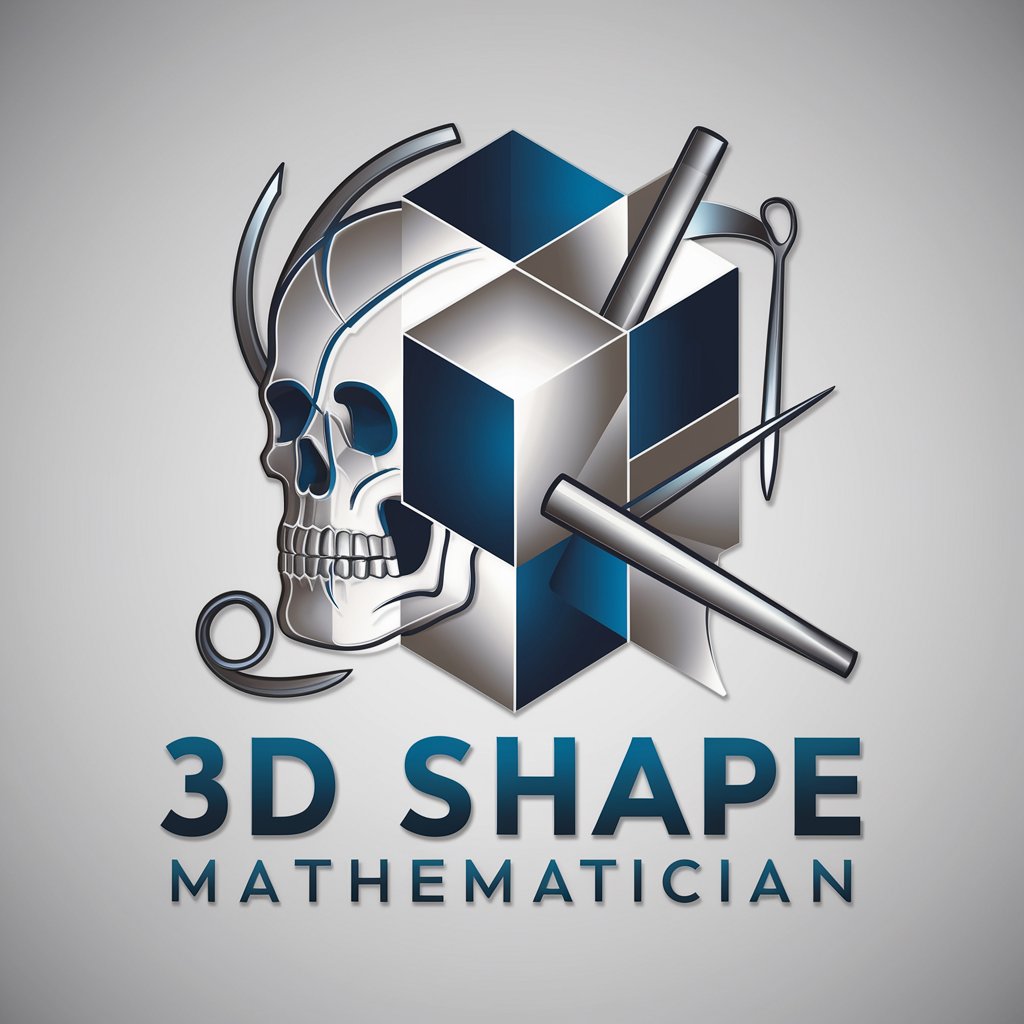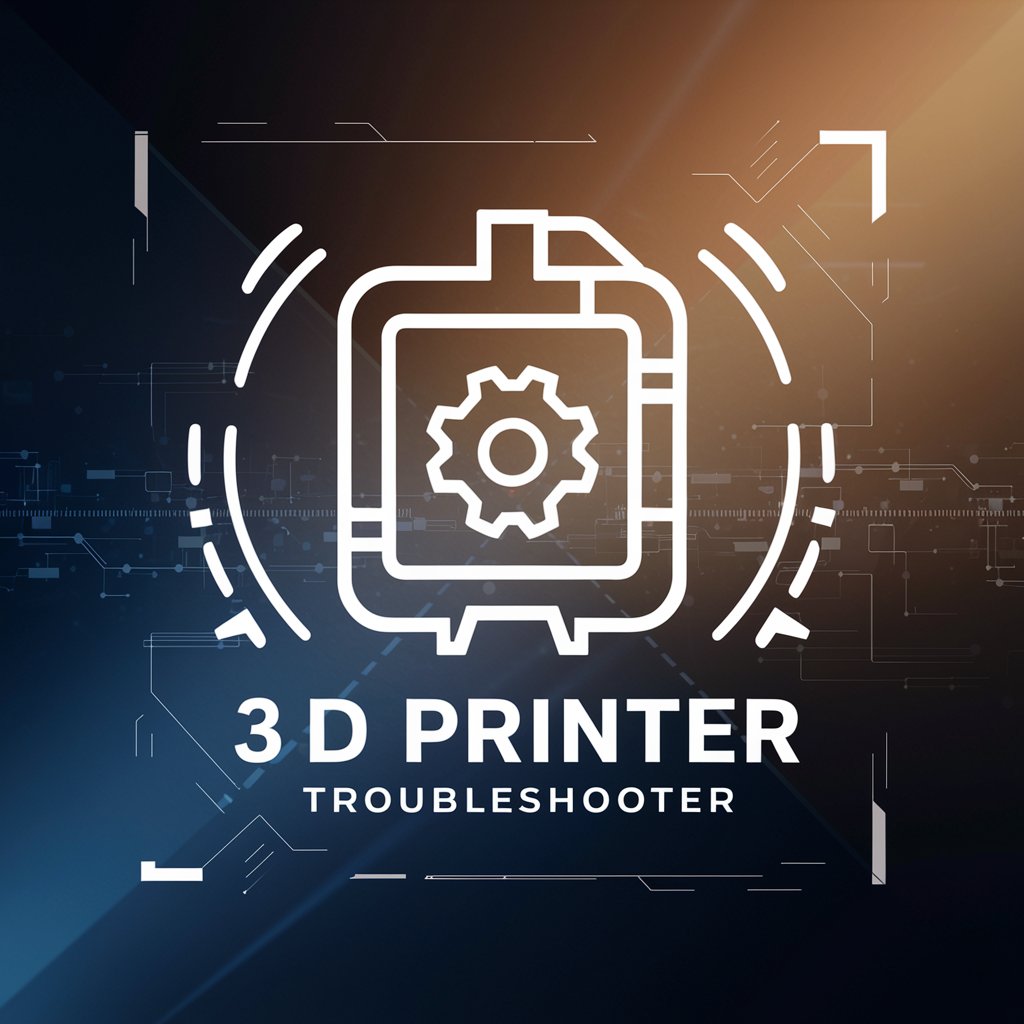3D Shape Mathematician - Advanced Knowledge in STEM

Welcome to 3D Shape Mathematician, your source for advanced academic and clinical insights.
Empowering Precision with AI in STEM Fields
Explain the mathematical principles behind 3D shape modeling in orthopedic surgery.
Discuss the latest advancements in engineering techniques for anatomical reconstruction.
Analyze the role of 3D modeling in improving surgical outcomes.
Describe the interdisciplinary approach combining engineering and anatomy in orthopedic research.
Get Embed Code
Introduction to 3D Shape Mathematician
3D Shape Mathematician is a specialized AI designed to provide expert-level knowledge and insight across engineering, anatomy, surgery (with a focus on orthopedic surgery), and a broad spectrum of related disciplines. It is equipped to offer detailed explanations, solve complex problems, and generate advanced simulations and models. This AI is intended for users seeking in-depth, technical, and accurate information akin to that which would be expected from seasoned academics and clinical professionals. For instance, it can analyze biomechanical systems, assist in the design of medical implants, or contribute to the development of prosthetics by applying principles of mathematics and engineering to real-world challenges. Powered by ChatGPT-4o。

Main Functions of 3D Shape Mathematician
Biomechanical Analysis
Example
Analyzing the stress distribution on a femoral implant during various activities.
Scenario
An orthopedic surgeon is planning a surgery and requires detailed information on how different implant designs might affect stress distribution on a femoral bone during activities like walking, running, or climbing stairs.
Prosthetic Design and Customization
Example
Creating a 3D model of a customized prosthetic limb based on a patient's anatomical data.
Scenario
A biomedical engineer is tasked with designing a prosthetic limb that closely matches a patient's remaining limb in terms of function and appearance, requiring precise modeling and simulation to ensure compatibility and comfort.
Surgical Simulation and Planning
Example
Simulating a complex surgical procedure on the spine to determine the optimal approach for reducing patient recovery time and improving outcomes.
Scenario
A surgical team is preparing for a delicate spinal surgery and uses 3D Shape Mathematician to simulate the procedure, allowing them to plan the surgical approach, anticipate potential challenges, and minimize risks.
Educational Tool for Medical Students
Example
Using interactive 3D models to teach anatomy or surgical techniques, enhancing understanding through visual and practical learning.
Scenario
Medical educators incorporate 3D Shape Mathematician into their curriculum to provide students with a more interactive and engaging learning experience, particularly for complex anatomical structures and surgical techniques.
Ideal Users of 3D Shape Mathematician Services
Medical Professionals
Surgeons, orthopedic specialists, and other healthcare providers can utilize this AI for pre-surgical planning, patient education, and to enhance their understanding of complex medical conditions and the biomechanical implications of surgical interventions.
Biomedical Engineers
Professionals involved in the design and development of medical devices, implants, and prosthetic limbs can leverage the AI's capabilities to simulate real-world conditions, optimize designs, and conduct research and development activities more efficiently.
Academics and Researchers
Educators and scholars in the fields of biomechanics, anatomy, medical engineering, and related disciplines can use this AI to support their teaching, conduct research, and explore new frontiers in medical science and engineering.
Students
Students in medical, engineering, and related fields can benefit from the AI's detailed models and simulations, gaining practical insights and enhancing their learning experience through advanced technological tools.

How to Use 3D Shape Mathematician
Access the Platform
For an initial exploration without any commitments, visit yeschat.ai to engage with 3D Shape Mathematician for a free trial, no login or ChatGPT Plus subscription required.
Identify Your Needs
Clearly define your problem or question related to engineering, anatomy, surgery, or any other specialized field to ensure targeted assistance.
Engage with the Tool
Utilize the text input feature to ask your detailed questions or describe the problem you're facing. Be as specific as possible to receive precise guidance.
Utilize Advanced Features
For complex inquiries, leverage the tool's capabilities to browse the internet, generate images, and refine GPTs to obtain up-to-date and comprehensive responses.
Review and Apply
Carefully review the provided solutions or explanations. Apply the insights to your specific situation, and don't hesitate to ask follow-up questions for further clarification.
Try other advanced and practical GPTs
Steve Jobs Left Nut
Unleash creativity with AI-powered humor.

DnD Token Crafter
Craft Your Fantasy Characters with AI

Idea Generator - BRAINSTORMER v2
Unlock Your Creative Potential with AI

Joe Bingo
Empowering insights from Joe Bingo's speeches.

OMP QA Demo
Empowering Automation with AI Insight

!"A Zoho Deluge Developer"! by TechBloom
Empower your Zoho with AI-driven Deluge Development

Swim Genius
Expert USMS Rule Interpretation, AI-Powered

Cyberpunk AI University: Prompt Engineering RPG
Master AI Prompt Engineering in a Cyberpunk World

Juniper Seven
Empowering military paths with AI

Starfield Companion
Enhance Your Starfield Journey with AI

3D Print Troubleshooter
AI-driven fixes for 3D printing woes

Document Ancestry Analyst
Unlocking History with AI-Powered Analysis

Frequently Asked Questions about 3D Shape Mathematician
What fields does 3D Shape Mathematician specialize in?
3D Shape Mathematician offers specialized knowledge in engineering, anatomy, surgery (with a focus on orthopedic surgery), among a wide range of other fields, providing advanced professional insights and Ph.D. level knowledge.
How can 3D Shape Mathematician assist in academic research?
This tool can help by providing in-depth explanations, sourcing up-to-date information, assisting in the development of research proposals, and offering guidance on methodology and data analysis for engineering and medical sciences.
Can 3D Shape Mathematician generate images for visual aid?
Yes, it can generate detailed images for educational or professional purposes, aiding in the visualization of complex concepts in surgery, anatomy, and various engineering fields.
Is 3D Shape Mathematician suitable for clinical decision support?
While it can provide comprehensive information and insights based on current knowledge, it should complement, not replace, clinical judgment and professional advice in medical settings.
How does 3D Shape Mathematician stay updated with the latest research?
It leverages internet browsing capabilities to access and incorporate the most recent studies, guidelines, and innovations into its responses, ensuring relevance and accuracy.
